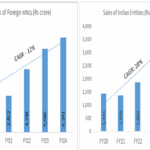With input from Dr Monica Vasudev
India
healthysoch
New Delhi, October 04, 2020 :
CMAAO IMA Consensus Statement on Protocol recommended by CMAAO-IMA to reduce mortality among healthcare workers (HCWs) in Asian countries with special focus on resource-limited countries
(Inputs: Round Table HCFI, CMAAO Weekly Meeting, IMA)
COVID-19: Definition : Acute manageable immunogenic thrombogenic inflammatory notifiable viral disease
Prevention
- All HCPs (caregivers) while on duty (clinical and non clinical areas) should wear N95/FF2P/Surgical Three Layered Mask (correct and consistent use). Transmission risk is <0.5% with N95 mask (Y Qian, et al. Performance of N95 respirators: filtration efficiency for airborne microbial and inert particles. Am Ind Hyg Assoc J. 1998;59(2):128-32)
- Consider wearing a surgical mask over N95 in OPDs (change the surgical mask after every patient examination)
- Hand washing to be done as per WHO protocol (Hand hygiene: why, how & when? Revised August
- In India, HCWs (caregivers) in practice may consider ICMR recommendation and take HCQ 400 mg per week, if not contraindicated. (Revised advisory on the use of hydroxychloroquine (HCQ) as prophylaxis for SARS-CoV-2 infection, ICMR, 22/05/2020). This may change from country/state to country/state or as per WHO.
- If HCQ is contraindicated or by choice, consider ivermectin 12 mg once a week (UP protocol 1,7,30 days and then once a month) (Vora A, et al. White paper on Ivermectin as a potential therapy for COVID-19. Indian J Tuberc. 2020;67(3):448-51). This may change from country/state to country/state or as per WHO.
- Physical distancing at least 3 ft x 3 ft (6 ft x 6 ft preferable); if not possible, add extra protection (double masking, gloving, PPE Kit, oral disinfectant gargles with povidone iodine or benzydamine)
- PPE kit (appropriate, without breach, proper doffing and donning): In poorly ventilated clinics/OPDs, consider wearing shirt/trousers made of 30 GSM laminated non-woven material with a white coat also made of the same material (F Selcen Kilinc. A review of isolation gowns in healthcare: fabric and gown properties. J Eng Fiber Fabr. 2015;10(3):180-90). GSM is our recommendation.
- Proper disposal of PPE kits including masks as per national or state pollution control guidelines
- Proper environmental cleaning and disinfection including engineering controls of common areas as per national guidelines
- Regular updated orientation and training of HCWs on prevention methods.
- Consider zero power eye glasses for protection (Maragakis LL. Eye protection and the risk of coronavirus disease 2019: does wearing eye protection mitigate risk in public, non-health care settings? JAMA Ophthalmol. 2020 Sep 16). Glasses provide partial barrier
- Consider shoe covers in OPD areas (patients, relations and HCWs) (National Guidelines for Infection Prevention and Control in Healthcare Facilities, NCDC, DGHS, MOHW, January 2020)
- In OPD areas, consider screening for loss of taste and smell/ fever/ SpO2/ hand grip before entry.
- Take patient history on phone; only quick examination to be done in face to face meeting and follow-up with telephonic counselling. Try to finish the face to face consultation in less than 15 minutes
- Every patient and their relations visiting the clinic should be considered positive unless tested negative.
- Patients and relatives (caregivers) should wear medical (surgical 3-layered) mask and not fabric mask (WHO Advice on the use of masks in the context of COVID-19 Interim guidance, 5 June 2020)
- Add extra protection in the form of oral povidone iodine (> 0.5%) gargles and nasal spray, particularly for ENT, oral, dental, eye examinations.
- Add high speed suction and extraoral suction for dental procedures/oral cavity examination.
- Consider plasma and air purifiers for clinics if proper ventilation or AC ventilation is not possible. (Also called portable air cleaners)
- Make sure that the clinic has a well-ventilated common toilet with working exhaust (with filter if possible) fan
- All healthcare workers should be up-to-date with their adult vaccination as recommended
- No eatables should be allowed in the clinic.
- Do baseline CRP, CBC, ESR, A1c (if diabetic), Blood Group (if not known), TSH (if known hypo- or hyperthyroid), 6 Minutes walk distance and saturation.
- Treat deficiencies of vitamins and minerals, if any: Vitamin D (2000 IU daily); Zinc (> 50 mg daily), Vitamin C (500 mg daily), B12, if vegetarian or known deficiency
- Get minimum of 7-8 hours sleep per night.
Precautions that HCWs should take at home to protect their family from exposure to Covid-19
- Wash all clothes in hot water using a disinfectant immediately after returning home or separate them.
- Full head bath should be taken and change into clean clothes.
- At the entry, remove shoes.
Duty hours
- 7/7/7 days is the standard recommendation
- In clinics, working hours can be up to 4 hours daily ± 1-2 hours (preferably day light hours); evening clinic can be conducted via teleconsultation.
Diagnosis
- Antibody test can be done once a month to check for exposure.
- Pooled RT PCR of staff can be done every week (5 samples can be tested at a time) (ICMR Advisory on feasibility of using pooled samples for molecular testing of Covid-19.
- RT PCR is preferred over rapid antigen test at present (till other sensitive tests are available); ask for Ct (cycle threshold) values as doctors generally have a high viral load due to repeated exposures
- Rule out existing disease as prevalent in respective countries.
Treatment
- Once diagnosed or suspected, on Day 1, do baseline (minimum) tests: quantitative CRP, CBC, blood sugar, ESR, 6MWT. (May add ferritin, d-dimer, IL-6, TNF-alpha, LDH, RDW, fibrinogen levels to decide about clinical severity)
- On Day 1, consider starting azithromycin/doxycycline, ivermectin, vitamins, melatonin, favipiravir, famotidine.
- In HCWs or high risk individuals with baseline CRP > 1 mg/L, start blood thinner (dabigatran 110 mg BD or rivaroxaban 10 mg OD or abciximab 2,5 mg BID or enoxaparin SC, if hospitalized). Aspirin may not be helpful in high viral load.
- If high risk with comorbid condition, start low dose steroids on day 3 (if there is evidence of pneumonia as evident by fever > 101, CRP > 10 mg/L, cough starting on day 3 or fall in SpO2 saturation by 4% or CT proven)
- Do 6MWT and CRP daily on days 1-5.
- Treat fever with mefenamic acid if not contraindicated (Pareek RP. Use of mefenamic acid as a supportive treatment of COVID-19: a repurposing drug. IJSR. 2020;9(6):69) Indomethacin/naproxen are other options.
- Consider HRCT chest in HCWs on Day 3 of the illness (Ai T, et al. Correlation of chest CT and RT-PCR testing in coronavirus disease 2019 (COVID-19) in China: a report of 1014 cases. Radiology. 2020; 200642).
- Loss of smell and/or taste are indicative of mild illness.
Sudden loss of taste and smell should be part of COVID-19 screen – Medscape – Apr 21, 2020.
- Small intestinal diarrhea without pneumonia suggests mild disease (Chaoqun Han, et al. Digestive symptoms in COVID-19 patients with mild disease severity: clinical presentation, stool viral RNA testing, and outcomes. Am J Gastroenterol. 2020;115(6):916-23).
- Infection in less than 12 years is mild; in over 12 years, treat as age
- Look out for probable re-hospitalization between 14-28 days.
- Continue anticoagulant for at least 28 days.
- HCWs with confirmed infection may be allowed 28 days off from work (Covid and post-Covid sickness).
- Watch for symptoms between 14-28 days; start treatment with anti-inflammatory drug, if CRP >10 mg/L
- Quit smoking. Quit alcohol or reduce to permissible limits.
- If symptomatic tachycardia, look for low TSH (with low T3), fall of Hb (decline of 1 gm), autonomic dysfunction, high CRP, inappropriate sinus tachycardia or underlying heart disease.
- If inappropriate sinus tachycardia, consider ivabradine (Achike O, et al. Ivabradine and inappropriate sinus tachycardia: a funny target for an inappropriate disease. JACC. 2018;71(11):2606).
- Do not miss MI or CVA as the first presentation.
- Do not miss Covid cystitis (pus cells with culture negative and no bacteria)
- High CRP can cause sudden reduction of LDL; be on the alert.
- Consider high dose statin for low grade inflammation (CRP 1-3 mg% and high LDL > 80 mg%).
- On Day 0, if CRP is 1-3 mg/L and LDL is high, there is high risk of atherosclerosis.
- Most antenatal cases (50%) will be asymptomatic (Allotey J, et al. Clinical manifestations, risk factors, and maternal and perinatal outcomes of coronavirus disease 2019 in pregnancy: living systematic review and meta-analysis. BMJ. 2020;370:m3320). Sir, can we delete 50%?
- Consider preoperative RTPCR in elective surgeries (Somashekhar SP, et al. ASI’s Consensus Guidelines: ABCs of What to Do and What Not During the COVID-19 Pandemic. Indian J Surg. 2020:1-11) along with pooled RTPCR of family.
- Isolation, quarantine and monitoring: You should isolate, quarantine and all family members and close contacts should monitor themselves.
Key points
- The virus is non-replicating after Day 9 (Cevik M, et al. SARS-CoV-2, SARS-CoV-1 and MERS-CoV viral load dynamics, duration of viral shedding and infectiousness: a living systematic review and meta-analysis, MedRxiv. Posted July 29, 2020).
- RT PCR may be positive up to 90 days, but Ct value should increase (Uptodate).
- If RT PCR is positive for >3 months or becomes positive after two consecutive negatives consider possible reinfection (Gupta V, et al. Asymptomatic reinfection in two healthcare workers from India with genetically distinct SARS-CoV-2. Clin Infect Dis. 2020 Sep 23;ciaa1451).
- Fever >1010F, CRP>10 mg/L, rapid rise of CRP, cough on Day 3 or fall of SpO2 on 6MWT by 4% are suggestive of pneumonia.
Red Flags
- Fever >1010F with drugs or >1030F without anti pyretics
- Persistent cough starting after day 3
- Sudden onset of shortness of breath ( or exertional SOB)
- Rapid rise in CRP ( > 10 mg/L)
- More than 50% lung involvement on CT ( 13/25 score)
Home care
- If you need up to 2 liters of oxygen
- For first 1-7 days: add Montelukast + famotidine/ranitidine: give levocetirizine if allergic component is high
- Consider colchicine 500 mcg twice daily during and post-covid persistent inflammation
- Consider HCQS in post-covid inflammation as it is steroid-sparing
- BCG and MMR based on personal preferences and evidences
10 Sutras to remember :
- Universal masking (correct, consistent and 3-layered) is THE prevention
(J Gen Intern Med. 2020;1-4). - RTPCR Ct is gold standard THE test for diagnosis (J Clin Microbiol. 2020;58(6):e00512-20).
- Zinc is THE mineral (Front Immunol. 2020;11:1712); D is THE vitamin (PLoS One. 2020 Sep 25;15(9):e0239799)
- Day 5 is THE day in Covid phase (Lancet. 2020;395(10229):1054-62).
- Day 90 is THE day after which the word COVID ends (CDC Duration of isolation and precautions for adults with COVID-19. Updated Sept. 10, 2020. Available at: https://www.cdc.gov/coronavirus/2019-ncov/hcp/duration-isolation.html)
- Home isolation is THE modality of treatment (Int J Surg. 2020;77:206-16).
- 12 years is THE age when the mortality starts (Annex: Advice on the use of masks for children in the community in the context of Covid-19, Aug 21, 2020, WHO UNICEF).
- CRP is THE lab test for seriousness (BMJ. 2020;370:m3339)
- Loss of smell and taste are THE symptoms equal to RTPCR test (ORL J Otorhinolaryngol Relat Spec. 2020;82(4):175-80).
- 15 minutes is THE contact time to get the infection ,
Author : Dr K K Aggarwal, President CMAAO
healthysoch







